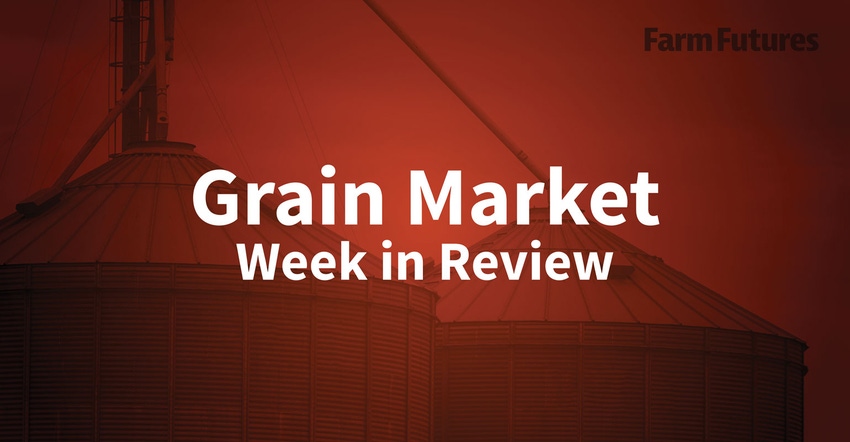May 28, 2021

Missed some market news this week? Here's what Jaquie Holland, Ben Potter and our Ag Marketing IQ bloggers have been writing about.
Ag Marketing IQ
Big speculators weren’t the only force driving corn futures a dollar or more off their highs in May. But these so-called hedge funds certainly helped accelerate the downturn over the last two weeks, trimming bullish bets by more than 95,000 contracts worth some 475 million bushels. Still, these professional gamblers may not be the real force behind corn’s ups and downs in 2021. Their net long positions actually peaked way back in January, just after nearby futures topped $5 for the first time since 2014. Instead, activity by commercial traders may offer a better overview of both today’s market and prospects for the rest of the year and beyond.
U.S. producers are coming off a strong year of rising prices. Agriculture is a global market on both the demand and supply sides; overseas producers will very likely respond in the same manner as their U.S. counterparts. More acres equals more production (weather cooperating) equals, more than likely, lower prices in 2021-22.
It is true that nobody knows what the markets will do, but a good analyst still needs to have an opinion on it. If you don’t put your opinions out there, you certainly avoid any negative backlash because you never have to take a side. However, how would we be serving our farmer clients if we were too afraid to actually tell them what we thought? The downside is, we don’t always get it right. Well, last year we got it right and it is a great feeling for those clients who stored their production as we advised.
The volatility being seen across commodity markets is also being found within the livestock sector. The whipsaw price action of increased volatility escapes no one, with dramatic daily trading ranges rattling nerves. The dairy complex was no exception to the recent commodity sell off with prices dropping $2.00 off recent highs. Escaping the recent commodity-wide sell-off has been hog futures, while the cattle complex seems to be stuck in a sideways rut.
Exports
Grain export inspections have been moving along at a healthy clip for the most part this spring, but corn, soybeans and wheat each saw moderate declines for the week ending May 20. Even so, totals for all three grains during the 2020/21 marketing year are still tracking above last year’s pace.
Analysts were expecting to see historically large corn sales this past week, which USDA confirmed in its latest export report, out Thursday morning and covering the week through May 20. Soybean and wheat sales were more muted but still fell within the range of analyst estimates that came out prior to the report.
Crop progress
USDA’s latest crop progress report, covering the week through May 23, showed corn and soybean plantings are getting even closer to the finish line after farmers were able to make some additional headway in recent days. Today’s report also included a first look at spring wheat crop conditions and updates to winter wheat quality ratings and maturity.
Corn planting has largely wrapped up in the Midwest and focus is increasingly turning to growing conditions in the region. As of May 23, 90% of anticipated 2021 corn acreage had been planted, up 10% from the previous week and another 10% ahead of the five-year average according to the latest round of Crop Progress data released by USDA last night. But even with rains and warmer temperatures across the Plains last week, soil moisture conditions in key areas of the Corn Belt are varied. “[We] will need more rain,” a Western Iowa corn grower shared in the latest Feedback from the Field survey.
Podcast
In the latest Midweek Markets, we talked through many of the top factors affecting grain prices this week, such as supply, demand, weather, ethanol trends and more. And be sure to stick around to the end to hear a bonus discussion on whether we think the “alt meat bubble” is about to pop!
Farm Futures Market Update · 05 - 26 - 2021 MM PODCAST
Advanced Marketing Class
Since their re-introduction three decades ago, options have been touted as a great pricing alternative for grain and livestock producers. Buying put options offers a price hedge while retaining the opportunity to benefit from a rising market. The cost of the hedge is known and no margin calls. Better yet, there are countless pricing strategies based on the myriad of combinations of buying and selling options.
Recaps
July 2021 futures prices inched up slightly this morning but favorable growing conditions in the U.S. sent all other corn futures contracts $0.01-$0.03/bushel lower. Higher wheat production in China could eat away at break-neck corn import paces from China, providing a source of weakness to U.S. corn prices. Cash soybean prices were mostly steady yesterday, with higher soybean futures prices offering more lucrative cash options. Timely rains helped improve French wheat crop ratings and the dollar rose overnight, sending soft and hard red winter wheat futures $0.02-$0.04/bushel lower this morning. However, dry conditions in the Northern Plains sent Minneapolis wheat prices up $0.04-$0.06/bushel in overnight trading.
Volatility was the name of the game in the grain markets this week, and Friday extended that theme as most contracts saw changes between 1% and 2%. Unfortunately, most prices trended lower after traders returned to technical selling today. Corn prices dropped as much as 2%, with winter wheat contracts down 1.75% to 2%. Soybean prices saw more muted losses of around 0.5%, meantime, and spring wheat prices firmed more than 1% higher on ongoing drought problems across major production areas for that crop.
About the Author(s)
You May Also Like




